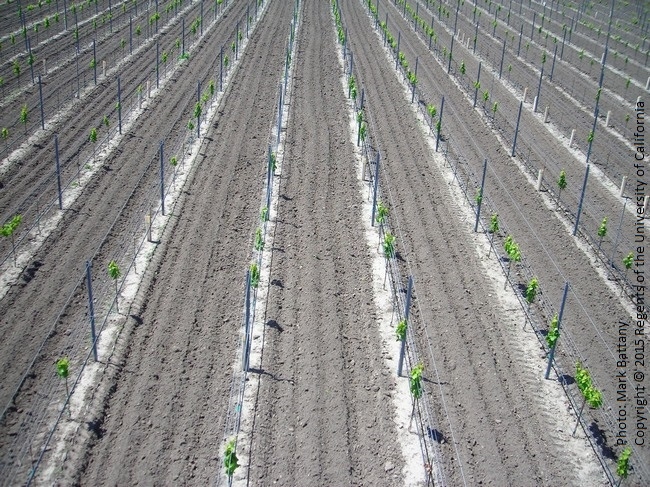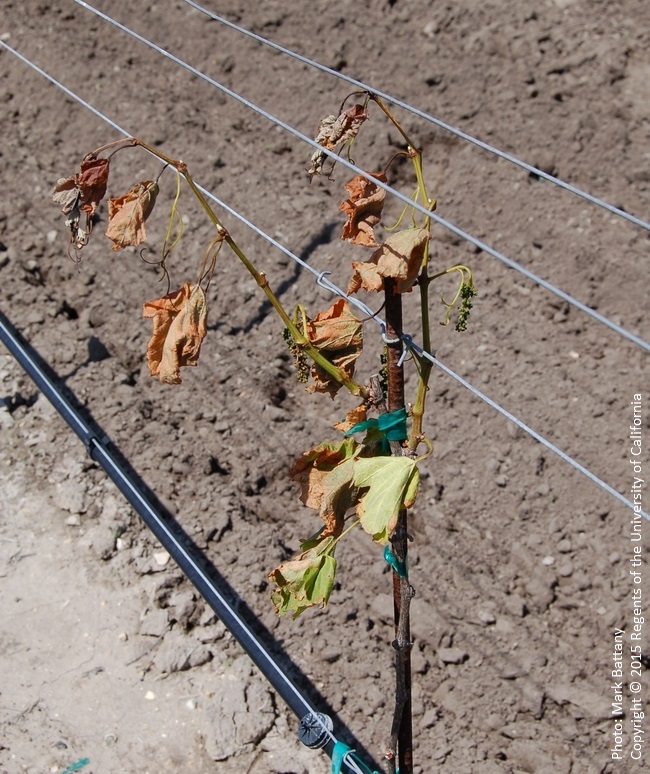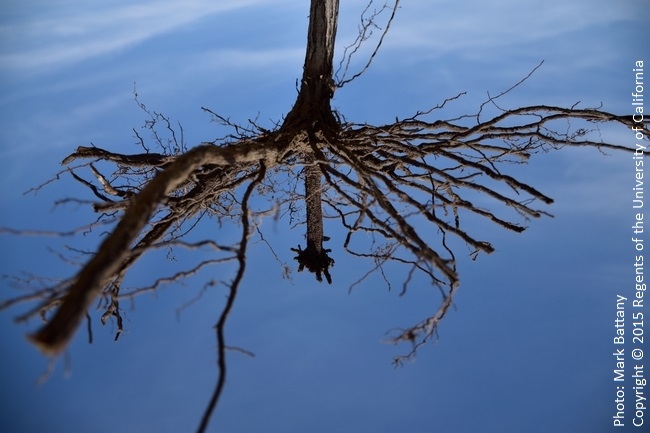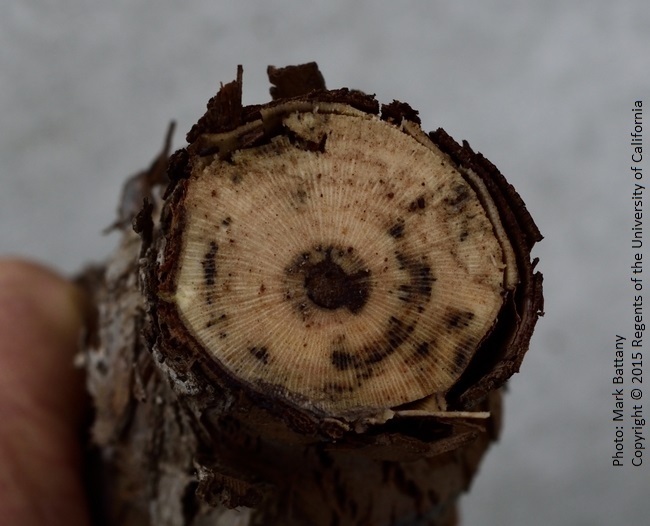In the past several years a number of coastal vineyards have experienced significant levels of vine death due to Black Foot Disease (aka Young Vine Decline). This disease results from infections with Cylindrocarpon spp. and Campylocarpon spp. fungal pathogens. In typical cases, vines appear to make normal growth for a couple of seasons and then cease growth rather suddenly, often times by not pushing any buds in the spring or by having very stunted shoots that soon die back.
Vineyards that have been suffering the largest losses locally in the past several years have been sites planted on ground that was recently farmed with intensive row crops (vegetables, flowers, etc.), and which were planted with 101-14 rootstock. The intensive cultivation of row crops may lead to high levels of the pathogens in the soil; this will be exacerbated if the vines are subjected to wet and poorly drained conditions such as can occur if the soil is not adequately tilled to remove any plow pans and hard pans that may have formed from the previous cultivation.
Rootstocks differ in their susceptibility to infection with these pathogens; research by the Gubler Lab at UC Davis has indicated that AXR1 has a high relative resistance, while 140R and 039-16 were the most susceptible of the rootstocks studied. This earlier testing did not include the 101-14 rootstock which has been commonly used in recent plantings in the coastal areas.
Limited field observations comparing 1103P and 101-14 at the same site under identical conditions have shown that 101-14 suffered much more loss; loss rates of over 50% with 101-14 were observed adjacent to vines on 1103P that suffered negligible losses.
Growers planting vineyards on sites that have previously been farmed with row crops or sites with conditions that may otherwise favor Black Foot Disease should consider the following measures to help reduce vine losses:
- Ensure the site has adequate drainage (deep tillage, drainage tiles and amendments as necessary)
- If possible, consider a fallow period before planting the vineyard
- Consider rootstocks other than 101-14, 140R and 039-16
- Request that the nursery inoculate the vines with the mycorrhizal fungus Glomus intraradices
- Plant vines on berms to help avoid wet conditions at the roots
- Move the drip emitter far enough away from the vine to avoid excessive wetting of the root crown
For more details on these pathogens and effects on grape vines, see the following website:
And also refer to pages 90-92 in Grape Pest Management, Third Edition.
Attached Images:

Chardonnay on 101-14 at the beginning of the third season showing large amount of vine loss due to Black Foot Disease.

Chardonnay vine that achieved some growth in the spring, only to collapse soon afterward.

Rootstock showing how the original root growth from the bottom node of the rootstock has died off from the infection, causing a flush of roots to emerge from a higher node. As the infection moves up higher through the rootstock the vine collapses.

Cross section of an eighth-leaf Chardonnay vine on 101-14 rootstock showing characteristic black streaking in the vascular tissue; this section was made just below the graft union.